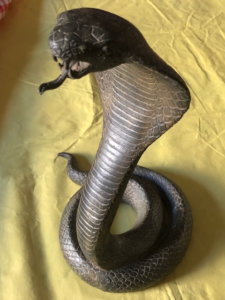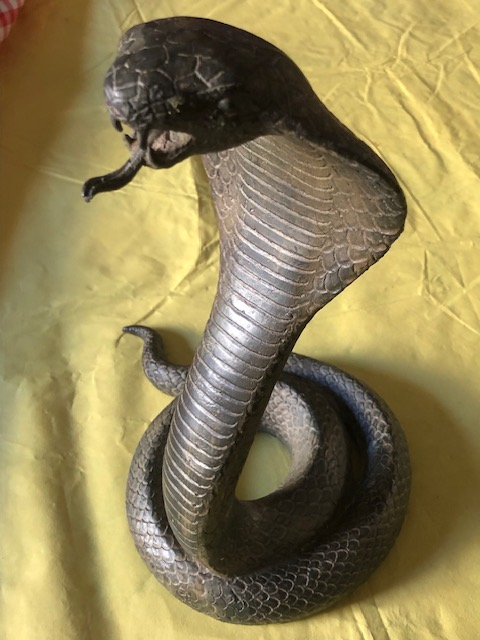Edgar Brandt and the Cobra
Prof. Francesco Carelli

Edgar Brandt (1880–1961) was a French metalworker. He was known for his innovative designs incorporating traditional and modern techniques, and his work can be found in many public and private collections worldwide.
He was a leader in the field of ironwork at the beginning of the 20th century. His work included everything from cutting-edge weapons to beautiful lighting and decorative metalwork. Brandt only bought from the best places when he needed other materials for his ironwork.
In the 1920s, he got many public and private commissions and was known as the best art deco ironworker. His ways of working were modern and careful. He used new machines and technologies that metalworkers hadn’t had access to before to make beautiful, seamless products. But almost all of Brandt’s workshops made things like radiator grilles and covers, firescreens, and-irons, mirror frames, console tables, pedestals, jardinieres, tables, floor lamps, and wall lamps.
Probably one of Brandt’s most important commissions to this date is his design of the Escalier Mollien staircase in the Louvre which was unveiled in 1914. Resembling that of a modern version of an eighteenth-century staircase, the banister and railing are composed of S and C shaped scrolls with gilded acanthus surrounding the rosettes. It has been said that “Brandt was justifiably proud of this state commission, and he used an illustration of the Escalier Mollien on his early 1920s adverting brochure”.
At the 1925 Exposition des Arts Décoratifs et Industriels Modernes in Paris, his many contributions included the Porte d’Honneur (which, because it was temporary, wasn’t made of expensive wrought iron but of a cheap alloy with Ruhlmann’s Hôtel du Collectionneur and his own aluminium finish), the gates for an ornamental metal-filled showroom, which featured his masterwork, LOasis, a five-panel wrought-iron and brass screen.
In 1925 and 1926, Brandt opened showrooms in both Paris and New York. Jules Bouy ran the New York showroom, Ferrobrandt, Inc., and the things it showed inspired many ornamental ironworkers in the United States. The Eternal Flame of the Tomb of the Unknown Soldier in Paris, the gate for the new French Embassy in Brussels, and a staircase in the Louvre were all projects for the public.





